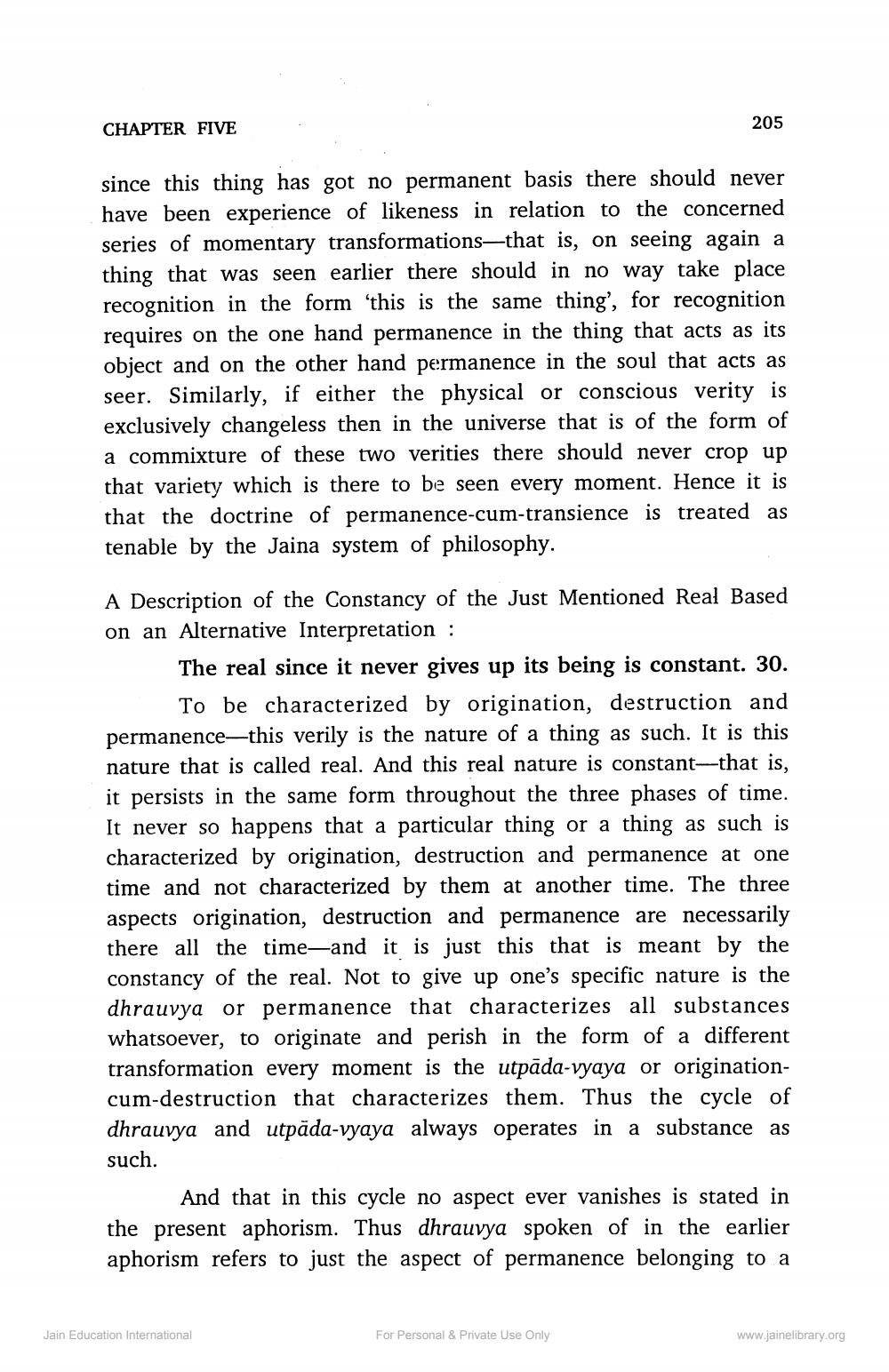________________
CHAPTER FIVE
205
since this thing has got no permanent basis there should never have been experience of likeness in relation to the concerned series of momentary transformations—that is, on seeing again a thing that was seen earlier there should in no way take place recognition in the form 'this is the same thing', for recognition requires on the one hand permanence in the thing that acts as its object and on the other hand permanence in the soul that acts as seer. Similarly, if either the physical or conscious verity is exclusively changeless then in the universe that is of the form of a commixture of these two verities there should never crop up that variety which is there to be seen every moment. Hence it is that the doctrine of permanence-cum-transience is treated as tenable by the Jaina system of philosophy.
A Description of the Constancy of the Just Mentioned Real Based on an Alternative Interpretation :
The real since it never gives up its being is constant. 30.
To be characterized by origination, destruction and permanence—this verily is the nature of a thing as such. It is this nature that is called real. And this real nature is constant--that is, it persists in the same form throughout the three phases of time. It never so happens that a particular thing or a thing as such is characterized by origination, destruction and permanence at one time and not characterized by them at another time. The three aspects origination, destruction and permanence are necessarily there all the time—and it is just this that is meant by the constancy of the real. Not to give up one's specific nature is the dhrauvya or permanence that characterizes all substances whatsoever, to originate and perish in the form of a different transformation every moment is the utpada-vyaya or originationcum-destruction that characterizes them. Thus the cycle of dhrauvya and utpäda-vyaya always operates in a substance as such.
And that in this cycle no aspect ever vanishes is stated in the present aphorism. Thus dhrauvya spoken of in the earlier aphorism refers to just the aspect of permanence belonging to a
Jain Education International
For Personal & Private Use Only
www.jainelibrary.org




